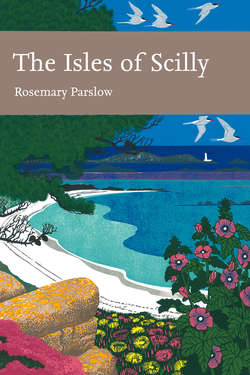Читать книгу The Isles of Scilly - Rosemary Parslow - Страница 19
STUDYING THE FLORA AND FAUNA OF THE ISLES OF SCILLY
ОглавлениеAlthough many of the visitors to the Isles of Scilly over the centuries have commented on the natural history of the islands, most of what has been written has concentrated on the most obvious groups. Authoritive books have covered plants, birdlife, butterflies and moths, but many of the marine species, insects and more difficult groups are the subject of papers in scientific journals or rather inaccessible unpublished reports held by English Nature and other bodies. Recently there has been a resurgence of interest in these other groups, especially invertebrates and marine life, which had otherwise been left to a small number of specialists.
For many years botanists have been well served by a Flora (Lousley, 1971), but it is now due for an update as there is a great deal of new botanical information available. Some plant hunters whose aim is to record rare plants, and especially alien species, are regular visitors to the islands.
Birds have tended to attract the lion’s share of attention since the late 1950s, when the St Agnes Bird Observatory became a focus for birdwatchers hoping to see rare and unusual migrant and vagrant species. October is still the most popular month for birdwatchers to visit Scilly. This is an extraordinary phenomenon; it has to be seen to be believed. Hundreds of enthusiasts, bristling with telescopes, pagers and binoculars, arrive in Scilly intent on seeing rare migrant birds. These birders mostly have well-defined patterns of behaviour, usually travelling en masse to wherever there is news of some exciting bird. So it is not unusual to see them all gathered in one place, behind lines of telescopes waiting patiently for a glimpse of their quarry. In the evenings many will attend the ‘count’, when the tally of the day’s finds are recorded.
The marine habitat might seem to be rather neglected. Although there are organised field trips to Scilly to study marine ecology, most of the information stays in student dissertations. But for every child visiting the islands half the fun is exploring rock pools. Now, with plenty of opportunities to dive or snorkel, the underwater life is becoming much better known. Underwater safaris, glass-bottomed boats and swimming with seals and seabirds are making this fascinating medium much more accessible to the general public.
Some of these visitors to Scilly are going to take more than a casual interest in what they see. Hopefully they will contribute records and notes that will lead to further expansion of our knowledge of the natural history of the islands. Since its inception the Isles of Scilly Bird Group has produced a report that also includes notes, short papers and reports on natural history subjects other than birds – the Isles of Scilly Bird & Natural History Review. Perhaps this book too will encourage an interest in the fascinating natural history of the Isles of Scilly.
The chapters that follow are arranged to give an overview of the geology, something of the history, the people who contributed to our knowledge of the natural history of the islands, the individual islands, the main habitats, and the major groups of flora and fauna. Descriptions of some of the plant communities are included as an appendix.
